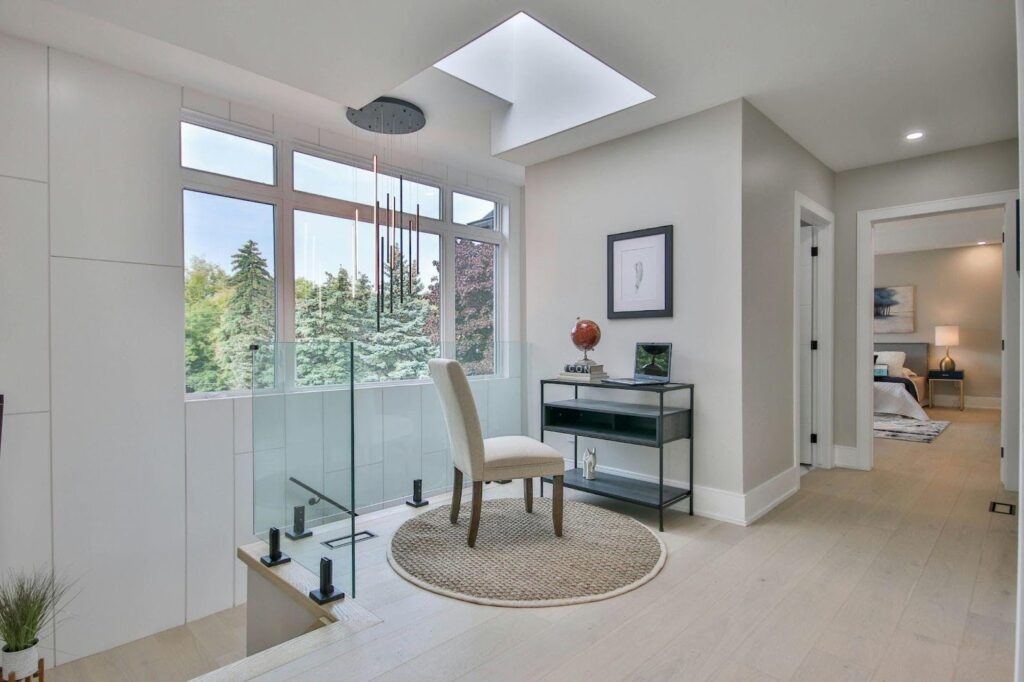Did you ever think of having a house that is beautiful to the eye, friendly to the environment, and suitable for your lifestyle? Greenhouse design by the year 2025 will no longer be a trend but a standard for the United States’ real estate market. Home shoppers are now looking for houses that are trendy, green, and energy-efficient. As Canadian real estate agents, we know more than anyone else how exceptional solutions turn ordinary houses into excellent properties.
Here, in this article, we will talk about how to create a home that adds property value and makes life easy. From smart technologies to smartly selected materials – that is what this article is about.
And while sustainable living can sometimes require an upfront investment, keeping an eye on your budget and saving up more money over time can make those upgrades far more attainable without financial strain.
Sustainability In Real Estate
61% of U.S. luxury residential consumers employ energy efficiency as a primary factor in determining which house to purchase, the REALM Luxury Report Series 2024 finds. No surprise – houses with eco-certs such as LEED or Energy Star have huge advantages: they reduce utility costs, encourage cleaner air, and create a more comfortable home. It’s all about well-thought-out solutions such as:
- Energy efficiency: Energy-saving technologies;
- Water conservation: Water-conserving systems, such as rainwater harvesting;
- Sustainable materials: Low-carbon materials, including recycled wood.
In the United States, where the typical 2024 electricity bill came in at about $137 per month, these technologies pay for themselves in a flash. Now, let’s take a closer look at the separate technologies and solutions you can implement today.
Smart Home Systems
Smart home devices, such as Google Nest or Amazon Alexa, conserve energy. They control heat, light, and appliance use automatically. For example, a smart thermostat reduces heating costs by up to 15%, as research by Energy Star concluded.
Energy-Efficient Windows
And it isn’t even something within the area of interior design, as some may believe, but actually the best way to improve energy efficiency with new windows. Today, companies offer double- or triple-glazed windows with Low-E coating, reducing heat loss by 30%. Ultraviolet light is blocked by these windows, and they keep the warmth of winter and coolness of summer inside the house.
Furthermore, homes with such windows are more popular in the market, especially in areas with harsh weather conditions such as Colorado or Minnesota. In addition, they offer visual aesthetics, emphasizing modern design.
Solar Panels and Battery Storage
Solar panels are the epitome of sustainability. In California alone, where the sun shines more than 300 days a year, panels recoup their costs in 5-7 years. Throw in the likes of Tesla Powerwall batteries, and your home is practically self-sufficient. It is not only saving money; it is an investment in the future.
Sustainable Building Materials
Bamboo and cork are excellent alternatives to wood nowadays. They are quick to grow back, strong, and in fashion. Recycled denim or cellulose can be used for insulation purposes, which is excellent when it comes to heat and sound insulation.
|
Material |
Benefits |
Avg cost (per sq. ft.) |
|
Bamboo flooring |
Renewable, durable, stylish |
$5-$8 |
|
Recycled denim insulation |
Eco-friendly, excellent soundproofing |
$1-$2 |
|
Cork flooring |
Sustainable, soft, noise-reducing |
$6-$10 |
These items make a home not only environmentally friendly but also cozy. They emphasize detail, something much in demand in the market.
Non-Toxic Paints and Finishes
Using paints and finishing materials with low volatile organic compounds (VOCs) is another step towards a healthier home. Benjamin Moore Natura, among other companies, offers eco-friendly paints that emit no toxic chemicals.
You can use such paints, for example, to paint vinyl windows Canada, as such products are ideal for households with children or allergy sufferers. Also, the difference in cost is negligible compared to regular paints.
Water Conservation and Landscaping
Water conservation is an important aspect of sustainable homes, especially in arid states like California or Arizona. Xeriscaping systems (low-water-use landscapes) are said to reduce water use by 50-75% in some reports. This not only benefits the environment but also saves a lot of money.
We recommend the following solutions:
- Rainwater harvesting systems: Collect water for irrigation and domestic use;
- Drip irrigation: Precise watering that conserves losses;
- Native plants: Locally adapted plants require less maintenance.
These choices make lawns both lovely and practical. For instance, in Phoenix, buyers often request homes with xeriscaping since it lowers maintenance costs.
Last Thoughts
Creating a sustainable home is an aesthetic combination of ecology, comfort, and value. From experience, we’ve seen that buyers are willing to pay more for homes that care for the planet and their wallets. Start small – install a smart thermostat, upgrade your windows to modern solutions, or add native plants to your garden.
These steps will transform your home into a dream space and a worthwhile investment because sustainable design is truly the future of real estate.

